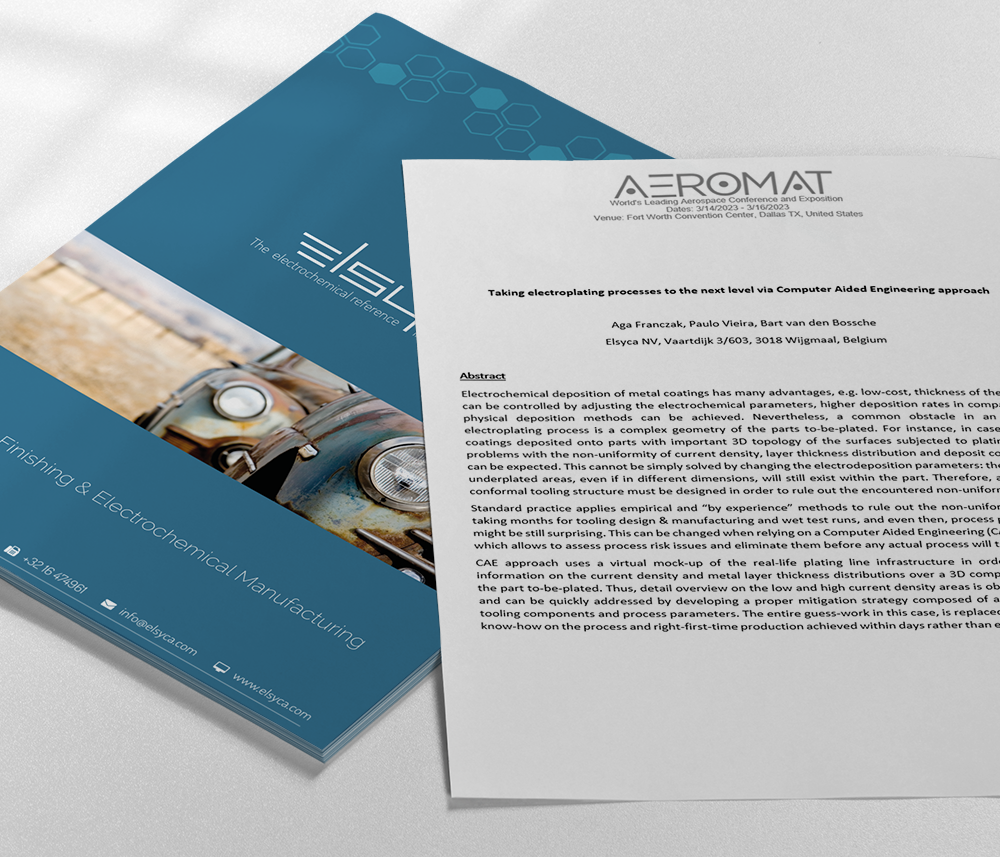
Post-processing surface treatment in the age of 3D printing: Electropolishing know-how (AEROMAT 2023)
AEROMAT 2023 presentation

Post-processing surface treatment in the age of 3D printing: Electropolishing know-how (AEROMAT 2023)
Aga Franczak; Paulo Vieira; Bart van den Bossche, Elsyca NV.
Abstract
3D printing is a new technological trend in manufacturing components relatively quick, in small batches and with a high degree of flexibility. Nevertheless, printing process itself is not the last step in producing components: after a part comes out of the printer it needs to be subjected to one or more surface treatment processes, depending on its application. Choice of the proper surface finishing treatment of the 3D printed parts should then be a part of the design process far before the actual part will be printed, as that step will have a direct impact on the product functionality. One of the characteristic features of the 3D printed parts is their rough surface which, in many sensitive applications e.g. medical, needs to be brought down to relatively low tolerances in order to minimize the potential for lumen trauma. In addition, many of these components occur in complex confined geometries which hinder uniform smoothing of the active surfaces. In order to rule this out, an electrolytic polishing treatment seems to be the ideal solution:
Electropolishing is the state-of-the-art surface finishing process for the components characterized by complex shapes and high surface roughness. The process removes burrs, micro-cracks and surface impurities created through 3D printing, providing excellent edge rounding, required smoothness and enhanced corrosion resistance. Nevertheless, the major challenge of the process is its effectiveness, which relies on a proper control of the current density distribution and electrolyte refreshment over the part: localized high current density areas will lead to an excessive local metal removal rate, thereby, compromising the dimensional tolerances of the part. A Computer Aided Engineering may serve in this case, as fast and robust performance analysis of an electropolishing process. This briefing will explain into details the importance of a CAE approach in the surface treatment of AM parts.
